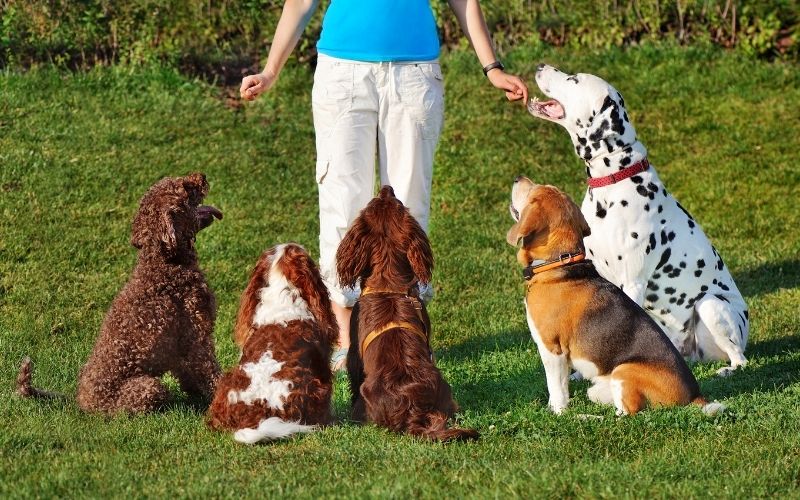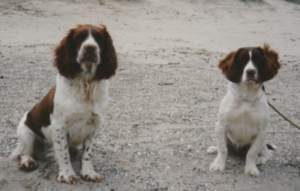Owning a dog can be a wonderful experience, but it’s important to remember that dogs are animals and need to be trained. If you’re new to dog ownership, here are some tips on how to train your dog.
As a beginner you’ll find dog training to be an experience for both you and your dog. It’s important to be consistent and to take your time when training, there is no rush and dog training should be an enjoyable activity.
Dogs need routine and stability in their lives, so start by establishing rules and limits.
Decide what behaviours are allowed and not allowed, and enforce these consistently.
Be sure to praise your dog when they obey commands, and provide positive reinforcement when they display good behaviour.
Dogs also need plenty of exercise; make sure you take your dog for walks or playtime outdoors daily, this will help him to understand the world around him as well as burning off excesses of energy.
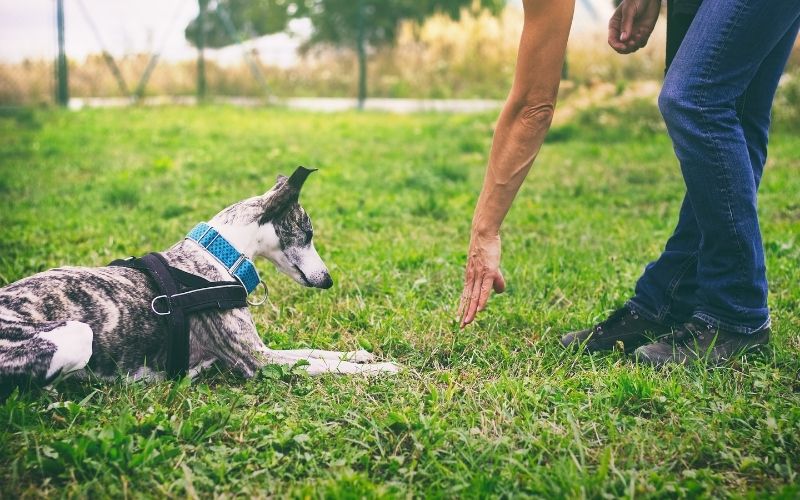
Training your dog doesn’t have to be hard – with patience and consistency, you’ll have a well-behaved pup in no time.
Where to begin with dog training
One of the first things that you should think about is your understanding of dogs.
If you’ve never had a dog before then, before you get one, I suggest that you do some reading about your choice of breed, the type of activities that it does ( if it’s a working dog ) and simply try to learn as much as possible.
Consider some books or other reading about dogs in general, how they think and behave.
Two good publications that I own and recommend which, in my view at least make interesting and informed reading are ‘Inside of a Dog’ by Alexandra Horowitz and ‘Be the Pack Leader’ by Cesar Milan.
[amazon box=”1849835675″ template=”horizontal”]
Both are experienced dog ‘people’ and you’ll gain a good insight into dog behaviour from both books.
It’s always a good strategy to have some idea of what you might be ‘up against’ and I recommend both books as good sources of information.
Dog training classes
These can be a good way to develop your confidence and knowledge of dog training.
Many new dog owners use puppy training classes as a way to introduce their dogs to others, to develop the puppy’s social skills and to improve their dog training and understanding.
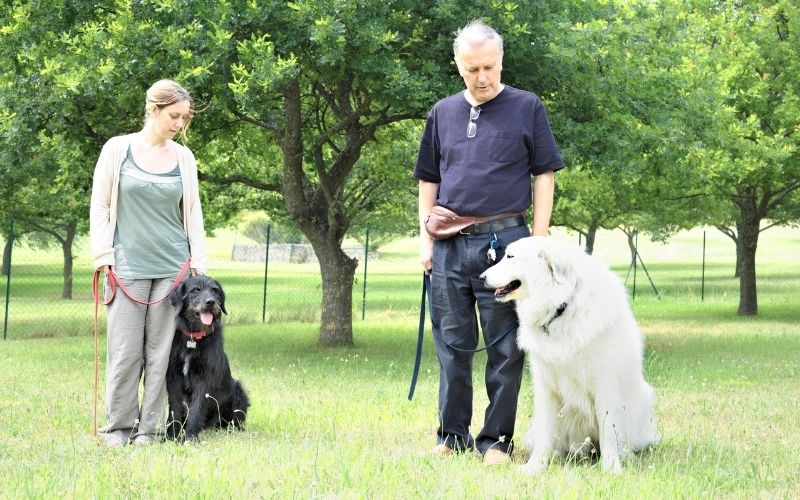
If you are a complete novice ( and everyone has been at some point) then you will benefit from these types of classes, even if you only attend for a short time.
Try to find classes that are run by experienced dog trainers that have a good reputation – your vet is often a good source of information and may be in a position to advise on local classes.
What are the basic commands for dog training?
There are three basic commands that all dogs should be familiar with regardless of breed or whether they are working dogs or not.
None of these commands are complicated but they do require time and consistency to develop, but, you’ll be pleased to know that the process is easy to follow.
Sit – I’ve an article on getting your dog to sit that you can read here. The way that we teach this is at mealtimes which makes it truly easy for you and for the dog.
Take a look at the article to see how we do it.
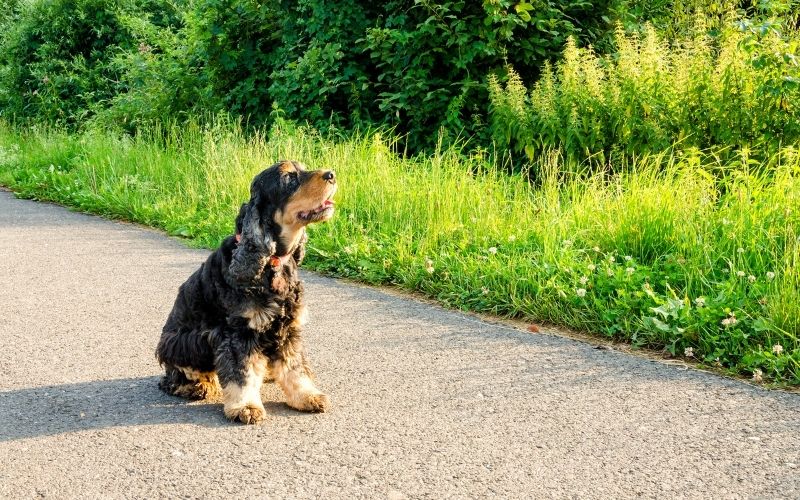
Coming when called – This is an important command for your dog to understand and the earlier in his life that we work on this the better.
You’ll want your dog to come back when you call his name or whistle him and I’ve a comprehensive article that can help you with this training that you’ll find here.
Stay – At times you will need your dog to wait or stay until you tell him to move.
This could be when you are taking his lead off ( or putting it back on ), it could be when he is walking to heel and you need to stop, or you could need to do something such as fasten your shoelace, so you need him to wait.
You can learn more about this aspect of training in my post at this link.
Keep your training sessions short and fun
In my experience, I’ve found that it is best to keep your training sessions short and fun for both you and your dog.
This way he knows that there are always benefits from spending time with you and will want to learn what you have to teach him.
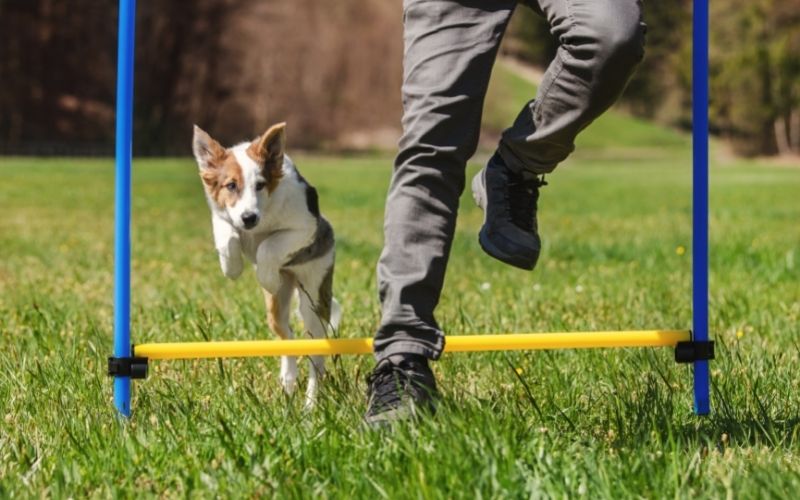
If your dog becomes bored or frustrated at any point during the training session then it’s probably time to stop.
You can always try again later or the next day, but if he seems unhappy with what is happening then it will only lead to him disliking training and that is not something that you want.
Be consistent in your commands
One of the most important things in dog training is to be consistent in your commands and this will pay off in the long run.
If you use different words or phrases to mean the same thing on a daily basis then your dog will become confused and you’ll struggle to progress with his training.
You might think that using ‘sit’ as opposed to ‘down’ is not important, but it is so make sure that you are using the same words every day.
Ensure that your dog can concentrate on you when training
Your dog will need to be able to focus his attention on you in order to follow a command and progress with his training.
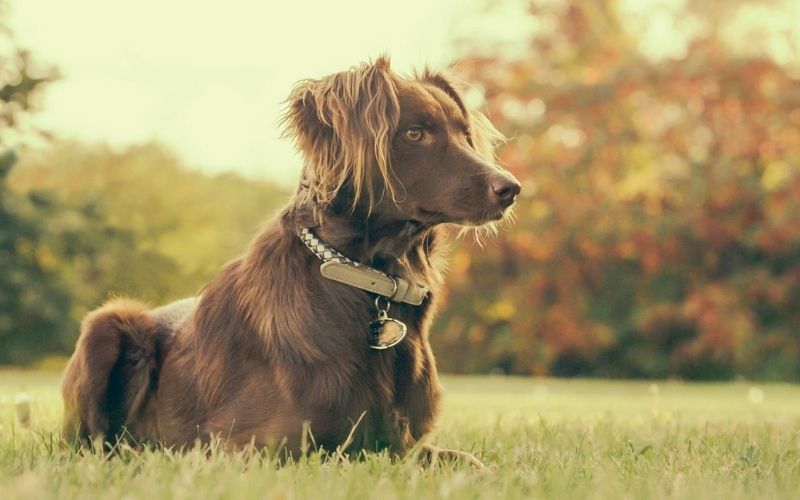
You may think this sounds like an easy task, but for dogs it is not always simple and can be mentally draining if it goes on for too long.
Always try to do your training away from any distractions such as other dogs, people and wildlife.
Be patient and positive with your dog
One of the most important things in any type of training is to be patient and to remain positive with your dog.
You can never expect him to learn new skills if you get frustrated or angry with him as he will pick up on this negativity and become reluctant to work with you.
Try to stay calm, patient, and positive at all times to ensure that your dog enjoys his training and wants to learn.
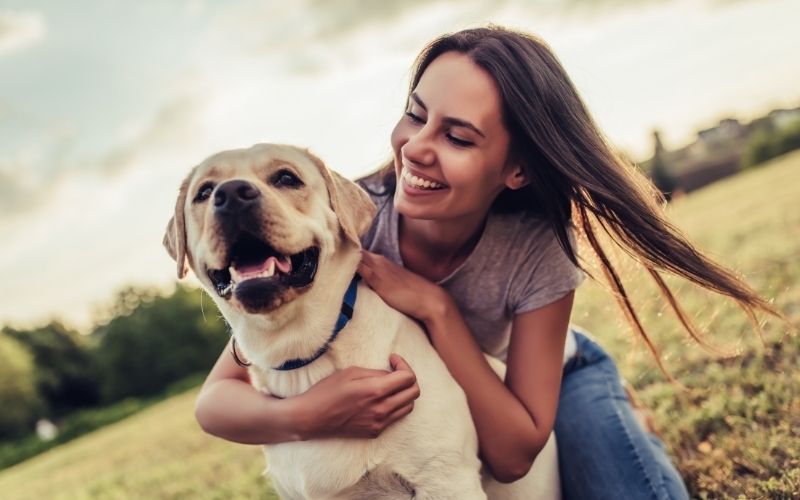
If he is struggling then call it a day and do something that he understands and knows or just let him play for a short time before you go home.
Always end your training sessions on a positive note.
Never punish your dog for making a mistake
One of the worst things that you can do during training is to punish your dog for making a mistake.
This will only lead to him becoming scared or anxious and he will be less likely to want to work with you in the future.
If he does something wrong then simply correct him with a firm voice and move on.
Despite what some people may say dogs are not naughty and simply do not understand the difference between right and wrong so, if your dog does something incorrectly he’s not being bad, he just doesn’t ‘get it’ yet.
Do not dwell on the mistake or make a big deal out of it as this will only serve to upset your dog.
Use treats as rewards during training
One of the best ways to motivate your dog during training is to use treats as rewards for good behaviour.
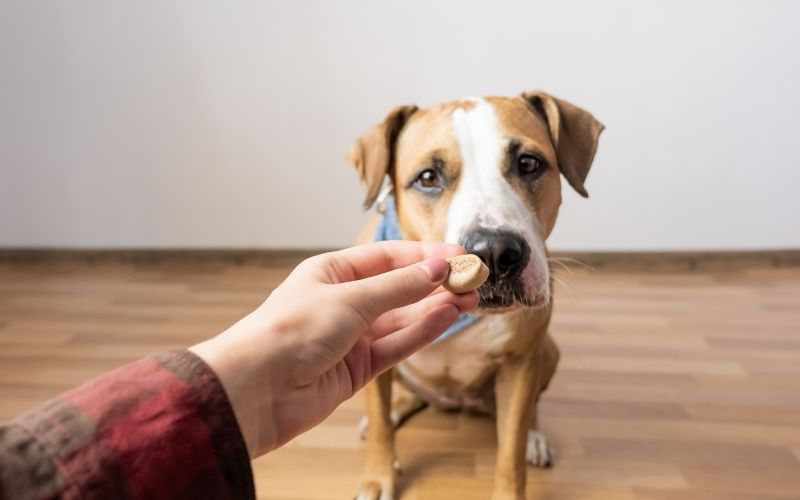
You should only give him a treat when he does something that you have asked him to do such as sitting or lying down or coming back when you’ve called him.
Make sure that your dog is always rewarded when training
When you are doing training with your dog it is important that he always knows that there is a reward at the end of it.
If he can see or hear what will happen then this will help to motivate him and ensure that he always wants to work with you.
Make sure that whatever reward you use is something different and exciting each time to keep your dog interested and wanting to learn more.
Understand that there are different types of dog training
When you choose to train your dog there will be different methods available to help you achieve this.
The most common ones are: * Indoor/outdoor * Private * Group * Residential * With or without a trainer
If you are unsure which type of training is the best fit for your dog, then speak to an expert who can offer advice and guidance.
Keep in mind though that each method will have its own pros and cons so you need to be sure that you fully understand what these are before making a decision.
Don’t train when tired or unwell
This rule applies to both you and your dog.
If you are feeling off colour or worn out then training will be a chore – and the same is true for your dog.
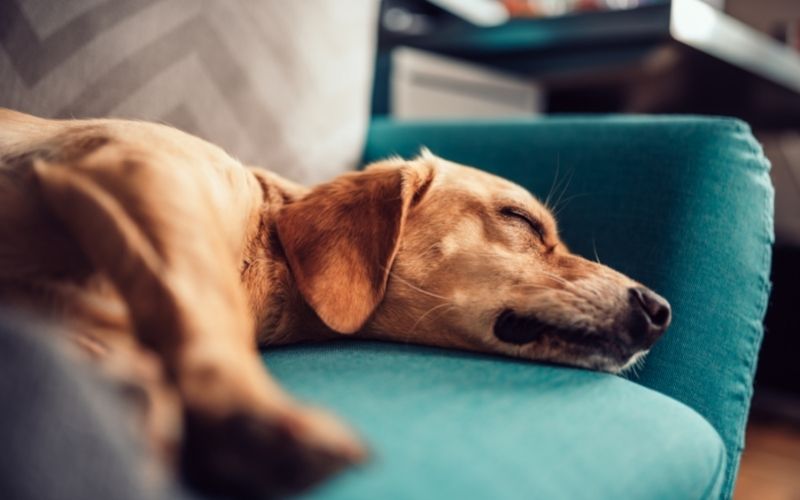
Take a break and just go for a walk, or just rest up.
Your dog’s training won’t suffer and the rest will do both of you some good.
Pick things up again when you have recovered.
Don’t press on regardless
If things aren’t going well and your dog seems to be struggling with his training then it’s time to take a break and stop.
Have a few days off, just go for some walks with your dog, perhaps to a few different places ( I find that the beach is a great place if you can get there ) and give him a chance to recharge and regain his confidence.
Final Words
Training your dog is one of the best things that you can do for him as it will help to build a strong bond between you, improve his behaviour and obedience, and give him the skills that he needs to be a happy and well-adjusted dog.
No matter what method of training you choose, always remember to be patient, positive, and consistent with your dog to ensure that he enjoys his training and learns the skills that you are teaching him.

